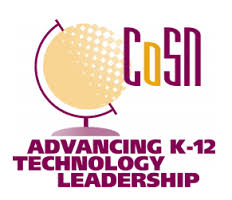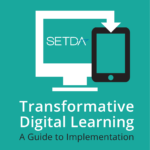Technical Support
Rapid changes in the ways technology is used for learning require an approach to technology support that reduces downtime and provides a fast, consistent, reliable experience for administrators, educators and students. The most effective tech support models are constructed directly from a high quality technology planning process that integrates technology with other school-wide support goals.
Successful districts have found it valuable to think broadly about the best overall approach to meet support needs comprehensively before establishing specific details that define what support will be provided to whom and by whom. While no two districts provide exactly the same combination of tech support products and services to their users, all have defined core elements comprising “tech support” that contribute to successfully meeting their local needs. The following questions have helped districts define, plan for, and implement the core components of tech support.
Approaches
Once the central components of tech support have been identified, districts can begin to define where tech support will be based, the ways that help tickets will flow through the service pathway, and how tech support will be staffed. Tech support typically begins with a help desk or service desk, but also can include service-level agreements with various providers, and both live and media-delivered face-to-face training and online support, school-based/school employees, student tech support teams, and tech support cooperatives.
If there is a lot of demand, the “front line” may spend much of its time dispatching tickets to other people instead of trying to solve specific problems. If there is less demand and a highly skilled and knowledgeable person taking the first request, many of the requests may be able to be handled immediately. Regular monitoring of tech support implementation and impact can provide valuable insight about how teachers and students use technology, as well as barriers to use.
Help Desk
No matter which model or combination of models for tech support districts select, the work starts with the Service Desk or Help Desk. This acts as the central point of daily contact between service providers and users, serving as a focal point for reporting incidents and for service requests. It also can provide an interface for other service management activities, such as change, problem, configuration, release and continuity management. Help desks can be coordinated by the district, intermediate unit or via a Service Level Agreement contract with a private company. If the district is entering a contract agreement with a private company, it is important to include minimum expectations and checks and balances for meeting expectations in the contract.
In House Support
A common school tech support model involves campus-based school employees who provide support ranging from managing incidents and service requests to communicating with users to supporting instructional applications. One advantage of this approach is that the tech support personnel typically have a better understanding of the instructional needs, students, climate and school context where technology will be used for learning than an external provider. A downside is that cost of hiring support staff may be viewed as prohibitive, particularly as demand waxes and wanes. Some districts host full time Service Desks and others employ particularly knowledgeable teachers as part time tech support for school buildings, in some cases with those people providing professional learning and mentoring to teachers above and beyond tech support.
Staffing tech support with students is another approach that districts have found to be successful. This model provides initial tech support training (and potentially course credit) for the students and for a school staff lead that will coordinate the student tech support plan.
Service Level agreements
Many schools and districts currently include some level of service plan with providers when completing their equipment purchasing contracts. Considerations related to level of support, costs and long-term sustainability should be reviewed when considering incorporating the service level agreements to equipment purchasing contracts.
Tech Support Cooperatives
Another staffing option, cooperatives, combines the capacities of multiple groups such as schools, districts, or regional units to offer a variety of services, including tech support. Cooperatives offer the opportunity to reduce costs and share expertise. Many cooperatives, such as the Kentucky and Illinois resources cited here, offer cloud-based software and disaster recovery as well as the tech support associated with those services.
MyTechDesk is a web-based ticket management system developed and operated by the Imperial County Office of Education for all California school districts tech support teams. My Tech Desk is supported by the K-12 High Speed Network (K12HSN) grant, funded by the California Department of Education. All support resources are available to California schools at no charge. Schools or districts outside of California may access the system for a fee.






 Digital learning is no longer a specialty area. Increasingly, leaders across state and district agencies in a variety of roles have shifted towards the use of technology as a primary tool for teaching and learning. Consequently, districts are moving away from technology planning as a stand-alone activity in favor of more comprehensive planning efforts that include technology tools and resources as one overarching component of achieving school-wide goals. In this integrated approach, districts carefully analyze all applications of technology across the entire school before making investments in devices, infrastructure, digital learning resources or professional development.
Comprehensive planning requires a collaborative leadership approach that starts with developing a shared vision on how digital learning tools and resources support learning; seeking input from a variety of internal and external stakeholders; communicating with all stakeholders to encourage buy-in; and using and understanding research and data to support plan goals and objectives. Other key areas to consider in the planning process include operational considerations, including budget, procurement, interoperability; student data privacy; infrastructure needs, including devices and connectivity; as well as professional development.
Digital learning is no longer a specialty area. Increasingly, leaders across state and district agencies in a variety of roles have shifted towards the use of technology as a primary tool for teaching and learning. Consequently, districts are moving away from technology planning as a stand-alone activity in favor of more comprehensive planning efforts that include technology tools and resources as one overarching component of achieving school-wide goals. In this integrated approach, districts carefully analyze all applications of technology across the entire school before making investments in devices, infrastructure, digital learning resources or professional development.
Comprehensive planning requires a collaborative leadership approach that starts with developing a shared vision on how digital learning tools and resources support learning; seeking input from a variety of internal and external stakeholders; communicating with all stakeholders to encourage buy-in; and using and understanding research and data to support plan goals and objectives. Other key areas to consider in the planning process include operational considerations, including budget, procurement, interoperability; student data privacy; infrastructure needs, including devices and connectivity; as well as professional development.

